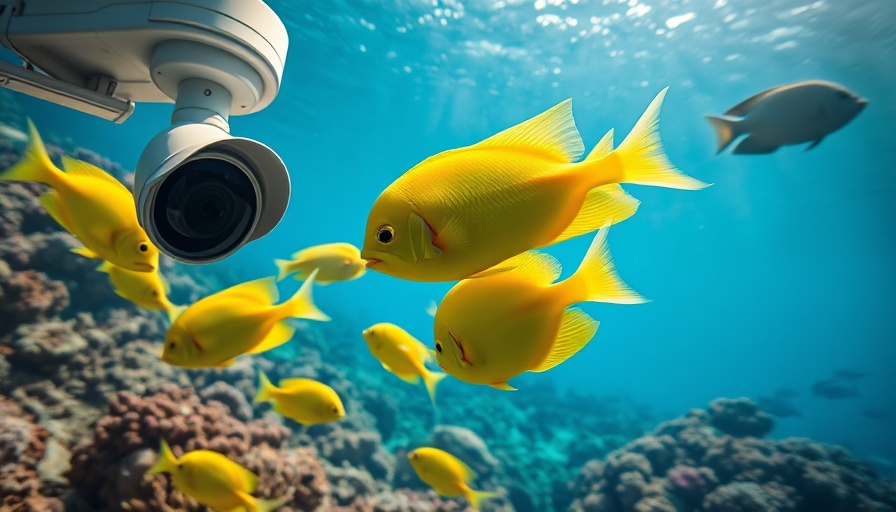
Underwater Surveillance: A New Weapon in Coral Conservation
In an innovative twist, researchers at the University of Miami are using underwater ‘doorbell’ cameras to tackle a significant threat to coral reefs near Key Biscayne, Florida. These advanced surveillance cameras, specifically designed to monitor fish predators, have revealed that three species of fish are primarily responsible for the alarming predation of coral. As marine scientists strive to reverse decades of decline within coral ecosystems, tools like these are crucial in understanding the behaviors of marine life that jeopardize coral restoration efforts.
Identifying Coral-Eating Culprits
The study unveiled a poignant finding: the redband parrotfish, foureye butterflyfish, and stoplight parrotfish were implicated in over 97% of coral consumption recorded during the research. Specifically, redband parrotfish were responsible for 56.3% of the bites on coral fragments, proving to be the most significant threat among the three species observed. This knowledge is pivotal for restoration practitioners; targeting efforts to avoid areas of high fish predation could greatly enhance the effectiveness of coral repopulation initiatives.
Reversing Coral Reef Decline
Florida's coral cover has plummeted by 90% since the 1970s, primarily due to climate change and related bleaching events. The urgency for restoration is underscored by the continuing rise in ocean temperatures. The researchers' innovative installation of coral-baited remote underwater video systems (C-BRUVS) highlights the need for improved methodologies in conservation sciences. As Diego Lirman, project leader and associate professor at UM’s Rosenstiel School of Marine, Atmospheric, and Earth Science, explains, “Identifying the fish species responsible for coral predation allows practitioners to select appropriate sites for outplanting coral species that are less likely to be eaten.”
Technical Innovations and Their Impact
The underwater cameras presented logistical challenges and creativity in design. Built with waterproof enclosures for GoPro cameras, these C-BRUVS were strategically placed on the ocean floor using PVC pipes for stability. Although some equipment was stolen, the success of the venture has laid the foundation for further exploration of the intersection between technology and marine biology. Moreover, researchers foresee utilizing artificial intelligence to automate the tedious process of analyzing hours of footage, drastically improving efficiency in future studies.
Future Implications for Coral Restoration
The insights gathered through this innovative research not only shed light on predatory behaviors of key fish species but also bolster the future of coral restoration efforts. By aligning the outplanting of coral with knowledge about fish preferences, scientists can enhance the chances of successful coral regrowth. This approach could pave the way for collaborative advancements in ecological technology, ensuring that restoration efforts are both economically viable and ecologically sound.
As the urgency grows for our ocean's ecosystems, the combination of marine science and technology illustrates a hopeful path forward. Conservationists, researchers, and policymakers alike must embrace these findings and consider how such innovations can address the challenges faced by coral reefs globally.
 Add Row
Add Row  Add
Add 




Write A Comment